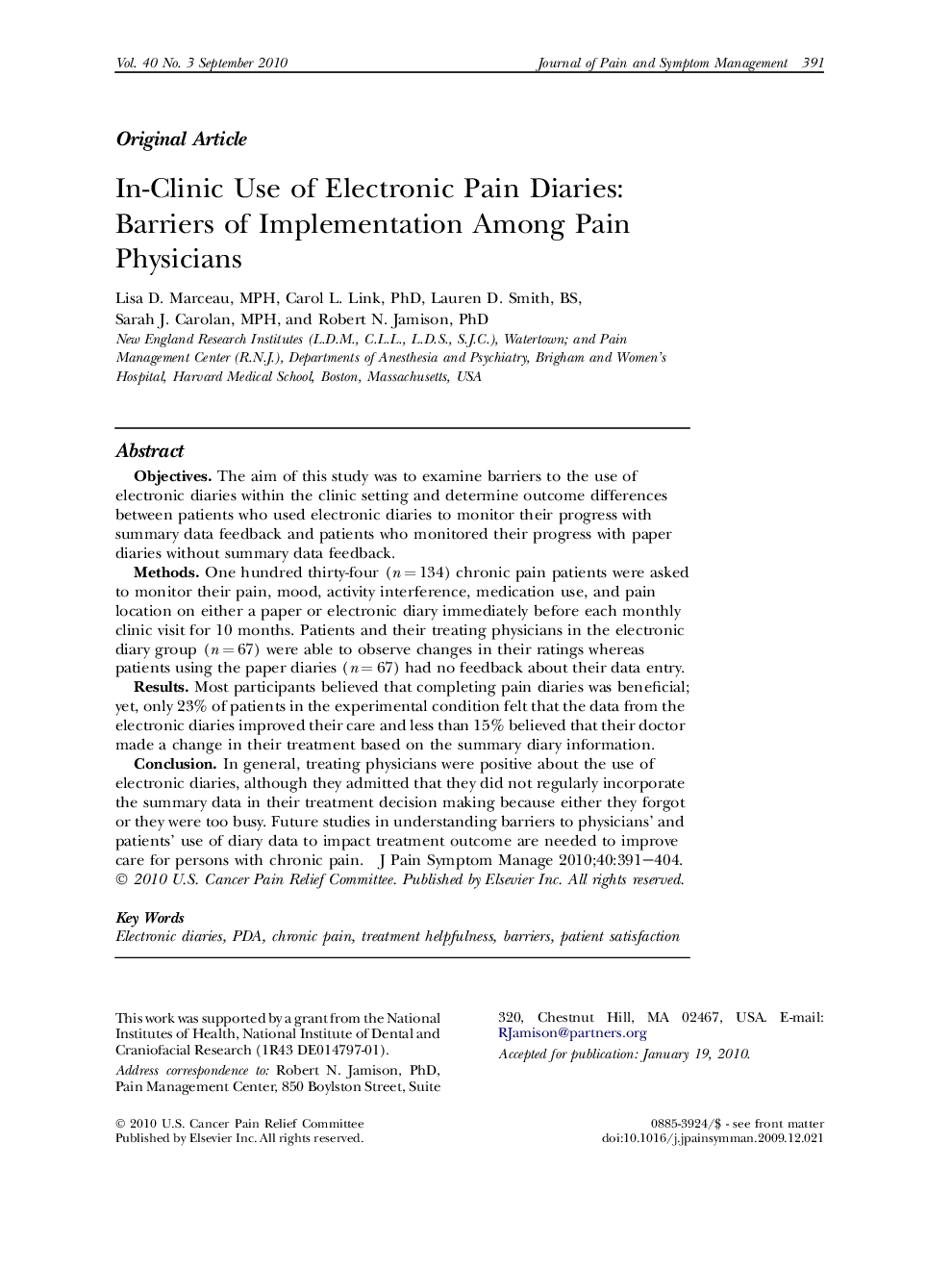| Article ID | Journal | Published Year | Pages | File Type |
|---|---|---|---|---|
| 2736252 | Journal of Pain and Symptom Management | 2010 | 14 Pages |
ObjectivesThe aim of this study was to examine barriers to the use of electronic diaries within the clinic setting and determine outcome differences between patients who used electronic diaries to monitor their progress with summary data feedback and patients who monitored their progress with paper diaries without summary data feedback.MethodsOne hundred thirty-four (n = 134) chronic pain patients were asked to monitor their pain, mood, activity interference, medication use, and pain location on either a paper or electronic diary immediately before each monthly clinic visit for 10 months. Patients and their treating physicians in the electronic diary group (n = 67) were able to observe changes in their ratings whereas patients using the paper diaries (n = 67) had no feedback about their data entry.ResultsMost participants believed that completing pain diaries was beneficial; yet, only 23% of patients in the experimental condition felt that the data from the electronic diaries improved their care and less than 15% believed that their doctor made a change in their treatment based on the summary diary information.ConclusionIn general, treating physicians were positive about the use of electronic diaries, although they admitted that they did not regularly incorporate the summary data in their treatment decision making because either they forgot or they were too busy. Future studies in understanding barriers to physicians' and patients' use of diary data to impact treatment outcome are needed to improve care for persons with chronic pain.
